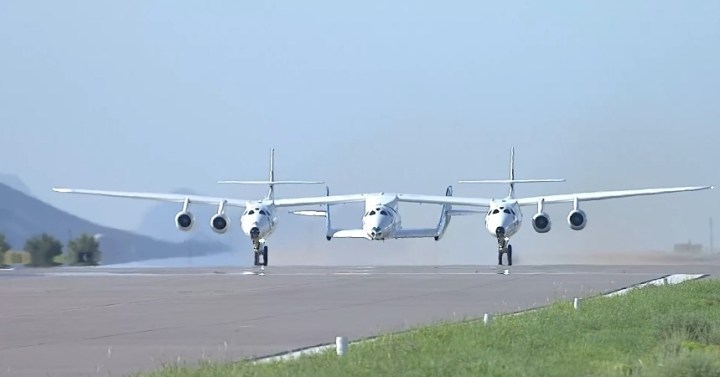
Founder of Virgin Galactic, Richard Branson, has made it to the edge of space along with five other crew members in the first fully crewed test flight of Virgin Galactic’s spaceplane VSS Unity.
On Sunday, July 7, the VSS Unity was taken to an altitude of just under 50,000 feet by the mothership VMS Eve before being released and firing its engines to reach the edge of space at 282,00 feet. After several minutes of weightlessness for the crew, the VSS Unity glided back down to Earth and landed safely on runway three at Spaceport America in New Mexico.
“It’s the experience of a lifetime,” Branson said from the VSS Unity as it headed back to the spaceport.
Branson was part of a six-person crew, along with three other Virgin Galactic employees and two VSS Unity pilots: Dave Mackay and Michael Masucci. This was the first time that the VSS Unity has flown with a full crew and also the first time that a Virgin Galactic flight was livestreamed.
The purpose of the flight was for Branson and the others to evaluate what the customer experience will be for those who pay for a seat on future flights. With a price tag of $250,000 per seat, future space tourists will be taken to the edge of space and experience several minutes of weightlessness before returning to Earth.
The altitude to which the VSS Unity flies has lead competitor company Blue Origin to question whether Virgin Galactic flights actually count as going to space. That’s because there is no one internationally agreed-upon standard for where the atmosphere of Earth ends and space begins. Most countries use the Kármán line to designate the boundary, which is defined as 100 km above the average sea level. However, other organizations, including the U.S. Air Force, consider the boundary of space to be 50 miles above sea level, which is around 80 km. The VSS Unity flies to a maximum of 90 km, so it is between these two boundaries. This is why you’ll see some people call the Virgin Galactic flight sub-orbital, but the passengers on the crew are still defined as astronauts.
With this test flight complete, the company now plans two further test flights before opening commercial services in 2022.



